Explore Angkor Wat in Cambodia: A Timeless Heritage Beckons
Nestled in the lush jungles of northern Cambodia, Angkor Wat stands as a testament to the grandeur of ancient Khmer architecture and spirituality. As the largest religious monument in the world, Angkor Wat was recognized by UNESCO to be one among the greatest World Heritage sites in 1992. This world wonder beckons travelers from across the globe with its awe-inspiring temples and rich cultural heritage. Beyond its monumental stone facades lies a history that spans centuries, reflecting the Khmer Empire’s zenith and its enduring legacy in Southeast Asia.
Cambodia
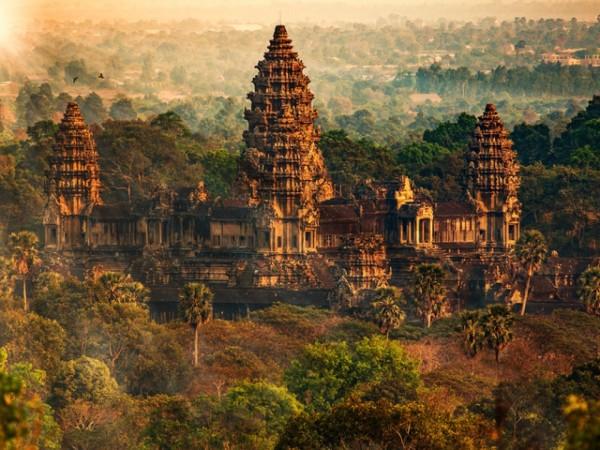
Angkor Wat History and Architecture
Unveiling the Khmer Empire's Jewel
Angkor Wat's history begins in the early 12th century, when it was built by King Suryavarman II to honor the Hindu god Vishnu before becoming a Buddhist temple complex. Its architectural style, which was inspired by Mount Meru, the home of the gods in Hindu mythology, represents the universe's cosmic order. The temple's central tower represents Mount Meru's summit, surrounded by concentric galleries and moats that evoke a sense of sacred enclosure.
Architectural Marvels and Intricate Details
Walking through Angkor Wat reveals intricate bas-reliefs depicting scenes from Hindu mythology and historical events, such as the famous Churning of the Ocean of Milk and battles between gods and demons. The precision of these carvings, depicting over 3,000 celestial dancers or apsaras, showcases the Khmer artisans' mastery and their devotion to religious storytelling through art.
Spiritual Significance and Local Lore
According to local beliefs, Angkor Wat is not just a historical relic but a living symbol of spiritual devotion. "Angkor Wat is not merely a temple; it's a sacred space where ancient Khmer kings communed with their gods," ArchDaily on the architecture of Angkor Wat. Visitors often experience a profound sense of tranquility and reverence while exploring its corridors and courtyards, making it a pilgrimage site for Buddhists and historians alike.
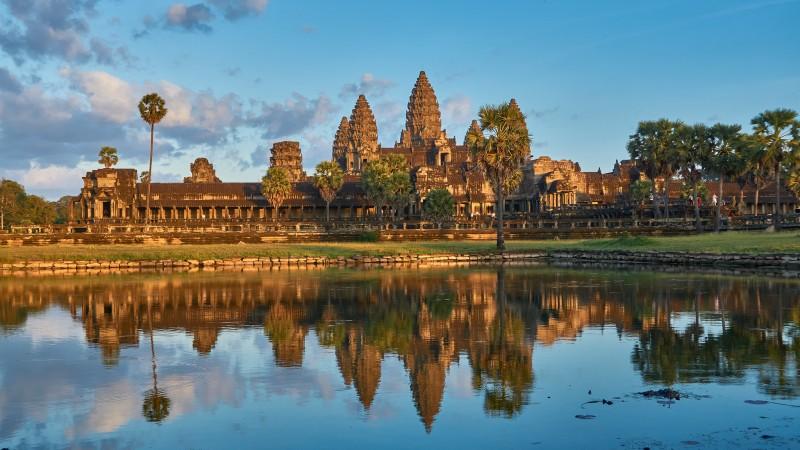
Angkor Wat complex - © Yen Bai News
Attractions Around Angkor Wat
While Angkor Wat itself is a marvel to behold, the surrounding area offers a tapestry of historical sites and cultural experiences that enrich your journey through ancient Khmer heritage.
Angkor Thom - The Great City
Begin your adventure at Angkor Thom, the Khmer Empire's final and most lasting capital. Enter through the South Gate flanked by statues of gods and demons, leading to the majestic Bayon Temple. Here, you'll encounter the enigmatic smiling faces of Avalokiteshvara, a symbol of serenity amidst the ancient stone towers. Wander through the Terrace of the Elephants, where kings once viewed victorious processions, and the Terrace of the Leper King, adorned with intricate carvings and mythical figures.
Ta Prohm - Nature's Embrace
Venture into the iconic Ta Prohm, where ancient stone temples are intertwined with towering silk-cotton trees and sprawling roots. This atmospheric temple complex, left largely as it was found, offers a glimpse into the untamed jungle that once engulfed the Angkor region. "Ta Prohm's blend of architecture and nature creates a mystical ambiance that captivates visitors," shares Rithy, a local guide familiar with its secrets.
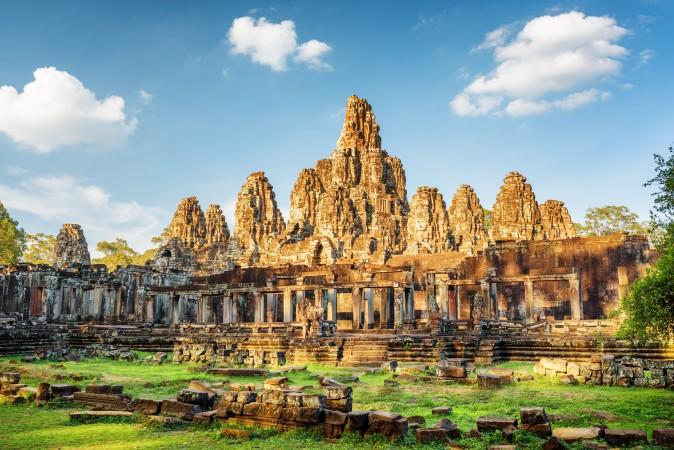
Angkor Thom - © Eva.vn
Banteay Srei - The Citadel of Women
Discover the exquisite artistry of Banteay Srei, located farther afield but worth the journey for its intricate pink sandstone carvings. Known as the "Citadel of Women," this temple is dedicated to the Hindu god Shiva and stands out for its remarkably detailed bas-reliefs depicting scenes from Hindu mythology. "Banteay Srei's miniature scale and delicate carvings showcase Khmer craftsmanship at its finest," remarks Sovann, an art historian specializing in Khmer art.
Phnom Bakheng and Pre Rup - Sunset Splendor
For panoramic views and stunning sunsets, climb Phnom Bakheng or Pre Rup, both offering vistas of the surrounding countryside and Angkor Wat in the distance. These temple-mountains were built to symbolize Mount Meru, the mythical home of the gods, and provide a serene setting to reflect on the day's explorations amidst Cambodia's ancient landscapes.
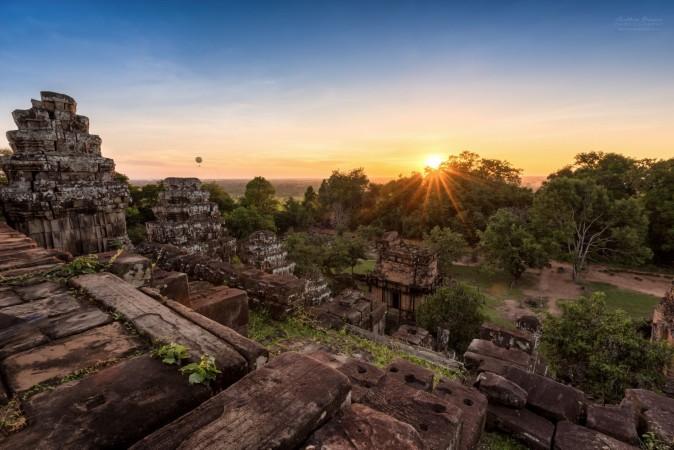
Phnom Bakheng - © gather
Unique Experiences at Angkor Wat
Beyond the Temples - Cultural Immersions
Uncover hidden gems beyond the main temples, such as exploring local markets in Siem Reap for authentic Khmer cuisine and handicrafts. Attend traditional Apsara dance performances, where graceful movements and ancient tales come to life against the backdrop of Angkor's mystical aura.
Sunset Serenity and Spiritual Retreats
Experience the tranquility of sunset at lesser-visited temples like Pre Rup, offering panoramic views of the Cambodian countryside. Consider a spiritual retreat or meditation session amidst Angkor's sacred precincts, guided by local monks or spiritual practitioners. This is a great chance for visitors to experience the serene atmosphere that invites introspection and connection with ancient wisdom of Angkor Wat.
Adventure and Exploration - Jungle Trekking and Birdwatching
For nature enthusiasts, embark on jungle treks around Angkor Thom's ancient walls, discovering hidden wildlife and lush landscapes. Birdwatching tours reveal Cambodia's diverse avian species, from the majestic Brahminy kites to the elusive Asian openbill, highlighting Angkor's role as a sanctuary for biodiversity.
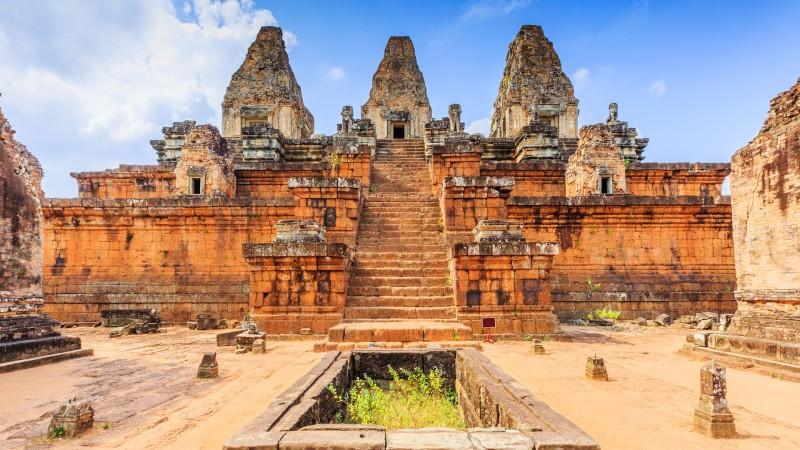
Pre Rup - © iStock
Conservation and Preservation Efforts
Sustaining Angkor Wat's Legacy
Preserving Angkor Wat goes beyond architectural conservation; it's about safeguarding Cambodia's cultural heritage and natural environment. Sustainable tourism practices play a crucial role in ensuring that future generations can also marvel at its wonders. Cambodia authorities put efforts to balance tourism with conservation, protecting both the temples and the surrounding ecosystem, as a commitment to a successful preservation of the past.
Community-Led Initiatives
Local communities are integral to Angkor Wat's conservation efforts. Initiatives like tree planting and waste management projects engage residents in sustainable practices. By involving the community, we empower locals to take ownership of their cultural and environmental heritage," says a community leader involved in eco-friendly initiatives near Angkor Wat.
Responsible Visitor Practices
Visitors can contribute to conservation by respecting guidelines such as staying on designated paths, refraining from touching delicate carvings, and disposing of waste responsibly. At Tweet Tours, we also encourage visitors to take action, from using refillable water bottles to supporting local artisans, making a positive impact on Angkor Wat's sustainability.
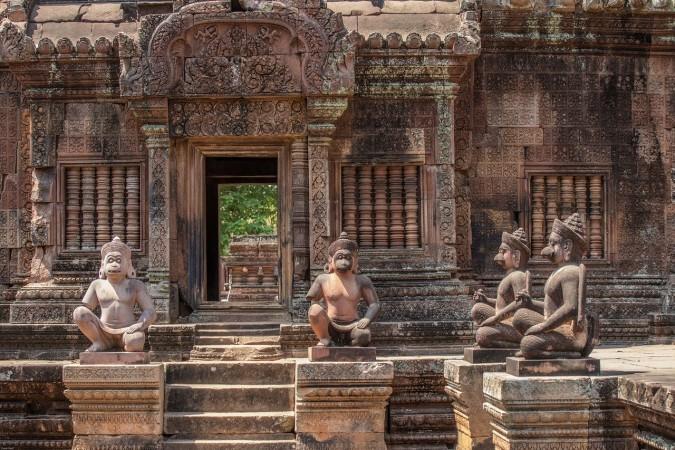
Statues at Angkor Wat - © ASEAN
Practical Tips for Visiting Angkor Wat
Navigating Logistics and Cultural Etiquette
Understanding practicalities enhances your Angkor Wat experience. Purchase your Angkor Pass at the official ticketing office to avoid scams and support preservation efforts. Respect local customs by dressing modestly, covering shoulders and knees while visiting temples. "Respecting the sacredness of Angkor Wat is crucial for both visitors and the local community," advises Phalla, a local guide in Siem Reap.
Transportation Insights
Opt for a tuk-tuk ride for flexibility and local charm, or cycle through the temple complex for a more intimate exploration. Or, choose guided tours from Tweet Tours for more historical context and insider insights into Khmer architecture and mythology. Our Angkor Wat exploration tours focus on sustainable travel practices, minimizing environmental impact while maximizing cultural exchange.
Expand Your Knowledge
For deeper insights into Angkor Wat and Khmer history, we recommended to explore beyond what you have seen with these resources:
- Books: The books "Angkor Wat: Time, Space, and Kingship" by Eleanor Mannikka and "The Civilization of Angkor" by Charles Higham provide thorough historical viewpoints.
- Documentaries: Watch "Lost Worlds: The Empire of Stone" and "Angkor Wat: History of Cambodia's Sacred Temple" for visual narratives on Angkor's cultural significance.
- Websites: Explore official resources such as the UNESCO World Heritage Centre's page on Angkor Wat and the official Angkor Archaeological Park website for updated visitor information.
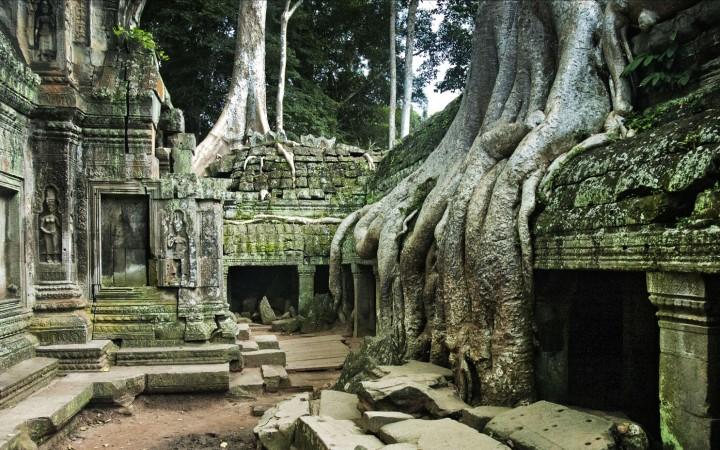
Ta Prohm - © Tinhte
Conclusion
Angkor Wat is a timeless tribute to Cambodia's rich cultural legacy and architectural brilliance. Whether you're captivated by its ancient temples, enchanted by its spiritual ambiance, or drawn to its natural beauty, a journey to Angkor Wat promises unforgettable experiences and profound insights into Southeast Asia's past. Plan your visit thoughtfully, respect its historical significance, and immerse yourself in the wonder of this UNESCO World Heritage site.
Articles for you

Experience Aboard The RV Indochine II - A Mekong Cruise With Tweet World Travel
The RV Indochine II is a luxury river cruise ship, offering an unforgettable journey through many attractions along the Mekong River. Built in 2017, this upscale vessel combines colonial elegance with modern conveniences to create a comfortable yet stylish environment for its crew and passengers. The ship’s intimate size makes it ideal for those seeking a more personal cruising experience while exploring Vietnam and Cambodia rich culture, scenery, and heritage. Whether you're gazing at the landscape from your private balcony or enjoying authentic local cuisine, RV Indochine II promises an exotic adventure like no other.

Witness Stilt Fishing In Sri Lanka: An Eco-Tourism Experience
Sri Lanka, renowned for its stunning beaches and rich cultural heritage, harbors a unique tradition that has captivated travelers for centuries: stilt fishing. This ancient practice, passed down through generations of coastal communities, blends artistry with necessity, offering a glimpse into a way of life intimately connected to the island's coastal rhythms. Stilt fishing in Sri Lanka isn't merely a means to catch fish; it's a cultural emblem, embodying the resilience and ingenuity of Sri Lanka's fishing communities.

Make Your Trip Stress-Free With The Tweet Trip App
Embark on your next adventure with confidence by downloading the Tweet Trip App, available for both iOS and Android. This essential travel companion allows you to view your detailed itinerary, stay connected with your tour guide and fellow travelers, receive real-time updates, and provide feedback effortlessly. With features like in-app messaging, emergency assistance, and location sharing, the Tweet Trip App ensures you travel smarter, stay connected, and enjoy a seamless, worry-free journey. Get started today and make the most of your travel experience with Tweet World Travel.

Pedal Through Paradise: Unveiling Cambodia's Hidden Gems on Two Wheels
The gentle whir of bicycle wheels mingles with the distant chants of monks as you glide past emerald rice paddies stretching to the horizon. This is Cambodia - a sensory explosion waiting to be experienced on two wheels. At Tweet Tours, we believe there's no better way to immerse yourself in the Kingdom of Wonder than by bicycle.
Cambodia isn't just a destination; it's a living, breathing tapestry of ancient wonders, natural beauty, and vibrant culture. Our carefully crafted cycling tours take you beyond the typical tourist haunts, offering a unique perspective on this captivating country. Ready to clip in and discover the magic of Cambodia? Let's ride!

Trekking in the Himalayas: A Journey Through Nepal's Majestic Peaks
The Himalayas rise from the earth like colossal guardians, their snow-capped peaks piercing the sky in a display of nature's raw power and beauty. Nepal, nestled at the heart of this mountain range, serves as the gateway to some of the most breathtaking trekking experiences on the planet. Here, the air is crisp and thin, filled with the promise of adventure and the whispers of ancient tales.
With Tweet Tours, as you set foot on these hallowed trails, you're not just a traveler - you're a modern-day explorer, following in the footsteps of legendary mountaineers and age-old traders. Each step takes you further into a world where nature reigns supreme and human resilience is tested against the backdrop of some of the world's highest peaks.
From the moment your boots touch the ground in Kathmandu, you'll feel the pull of the mountains. The bustling streets of the capital, with their sensory overload of sights, sounds, and smells, soon give way to serene mountain paths where the only soundtrack is the crunch of gravel underfoot and the distant tinkling of yak bells.

Exploring Mui Ne's Wonders: Unique Attractions & Local Dishes
Nestled along the southeastern coast of Vietnam, Mui Ne emerges as a captivating gem, blending natural wonders with cultural richness. Renowned for its stunning landscapes and unique attractions, Mui Ne beckons travelers seeking both relaxation and adventure in equal measure. Mui Ne's renowned beach dunes, bustling fishing towns, and excellent local food await exploration at every turn.
The allure of Mui Ne lies not only in its pristine beaches and crystal-clear waters but also in its diverse range of activities catering to every traveler's whims. Whether you're drawn to thrilling water sports like kitesurfing and windsurfing on its dynamic shores or seeking tranquility amidst the picturesque Fairy Stream, Mui Ne promises an unforgettable journey filled with discovery.
